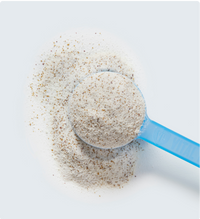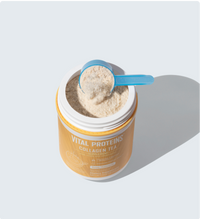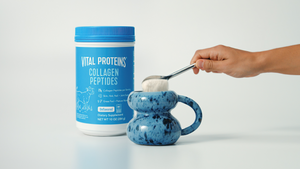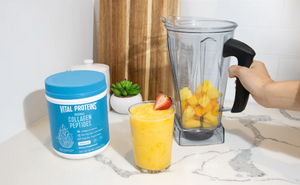The bird dog exercise has been popping up everywhere. You'll find variations of this stability exercise in HIIT, barre and yoga. But is this seemingly simple, no-equipment-needed move effective?
We tapped Morgan Bontz, Master Trainer at Physique 57, to share all her tips and tricks for getting the most out of this simple, yet effective move.
Here, we'll cover everything you may be wondering about the bird dog exercise (including how it got its seemingly bizarre name) plus suggestions for how to increase the move's intensity for max results.
Vital Note: This article has been made available for informational and educational purposes only. It is not intended to be a substitute for professional medical advice, diagnosis, or treatment. Always seek the advice of your physician or another qualified health provider with any questions you may have regarding a medical condition. Your licensed healthcare professional can best provide you with the diagnosis and treatment of any medical condition and assist you as well in deciding whether a dietary supplement will be a helpful addition to your regimen.
How do you do the bird dog exercise move?
The great thing about the bird dog exercise is that the only piece of equipment you need is an exercise mat to protect your knees (and that's optional). So, the move can be added to any workout, anywhere.
Start on all fours in a tabletop position with your knees aligned directly under your hips and your hands under your shoulders, with a soft bend in your elbows. Keep you back in a neutral position and complete the move with a strong core.
"Roll your shoulders back and down and engage your abdominals in a neutral spine position, drawing your belly button into your back and maintain the natural curve of your low spine," Bontz tells Lively.
From there, raise your right arm and left leg. Throughout the move, you should keep your body in a straight line, with your shoulders and hips square and your neck lengthened, gazing down at the floor.
"Hold this position briefly then lower back down to return to the starting position. Do the same with the left arm and right leg and return to the starting position. That would be one set," Bontz says, adding that you can do several reps.
What is the bird dog exercise good for?
You may be wondering if bird dogs really work. We can't say we blame you — after all, from afar, they look like a move a toddler with decent balance could master. But, according to Brontz, this bodyweight move work! (Quite well actually.) Here's why the move is so beneficial.
As the full-body move is relatively easy, and can easily be modified, it's good for people of all fitness levels. This low impact workout targets your core, glutes, back and thighs. It can be used to help loosen up after a long day hunched over a desk and help you work out any instabilites.
"I love the bird dog because it works on the body as a whole instead of only isolating specific areas. You will work your abdominals and glutes, control, stability, posture, and even the coordination between the two sides of your brain. The bird dog is also accessible to all experience levels and easier on the low back than traditional ab work," Bontz says.
Additionally, the move works well to help build core stability, as you need to keep your core braced throughout the entire move to maintain balance. It also may improve balance and posture.

How can I make the bird dog exercise harder?
Congrats! You've mastered the move, and you're at the point where increasing reps doesn't make the move feel more challenging. So now you're probably wondering how to make a bird dog exercise more difficult. No fear, we're here to take your bird dog to the next level.
"You can increase resistance by either holding a hand weight in the lifting arm or looping a resistance band around the extending foot or hand," Bontz tells Lively.
One of her favorite variations of bird dog is to bring the knee and elbow together after each extension rather than lowering back to all fours. "This will get the exercise even deeper into your abdominals," says Bontz.
If you're looking for more of a challenge, you can do the move starting from high plank position. Be sure to keep your core braced and spine in neutral position like you would from all fours. Then, life your right leg and right arm off the ground, pause and return to start. Then, repeat on the other side.
Why is it called a bird dog?
Yes, there is a reason for what seems like a very random name.
"The move is thought to be named after the pointing position of hunting dogs, who stand lengthened with a front leg up and a back leg extended behind," explains Bontz.
Now Try This Bird dog workout
Now that you know all about the benefits, try adding them to your workouts. Bird dogs are stabilizing, so it's smart to begin your workout with this gentle, effective move. (The move is also easier on your back than traditional crunches.) You can try the following routine, created by Bontz, for your next workout.
How to do it: Perform each exercise for the recommended amount of reps or time. Complete the circuit 3 times.
- Bird Dog: 8-12 reps on each side
- Plank: Hold for 60 seconds.
- Alternating Lunge: 20 reps on each side
- Squat: 10-15 reps















